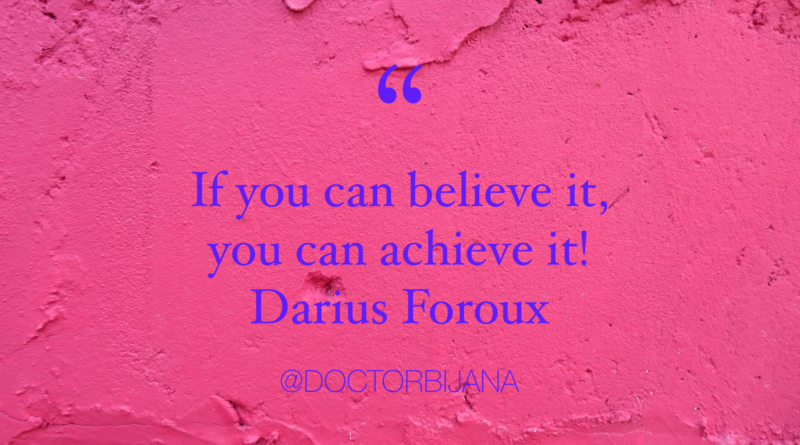Set SMART Goals
One of the reasons I consider writing this series a treat is because I personally LOVE setting and achieving goals. Its also a pleasure for me to read about goals and all the methods people use to accomplish them and I’ve done so for many years. In my last post about setting a word of the day, we went back in time to 2008. I first wrote about SMART goals in 2013 – just enough time to make digging into this material again feel new and exciting. I promised those who aren’t a big fan of the “woo” inherent in a word of the day approach that I would give something practical today and this is about as practical as it comes. This technique works best for goals.
SMART is an acronym which for our purposes stands for Specific, Measurable, Attainable, Relevant and Timely. This method originated in the 80’s as a method to write down meaningful objectives in business. Business is driven by the bottom line, so productivity is vital. I find that techniques like SMART, though developed in the business sphere, can be applicable in our personal lives as well. I’ve created this handout to help you set some SMART goals – you may want to print that out as you read through each section.
Specific
Some of the most common New Year’s resolutions are so nonspecific that they are more like snow. Beautiful in the moment and gone in a brief span of time. Exercise more and lose weight are perfect examples of nonspecific goals. Exercise by walking for 30 minutes or doing a fitness class 3 times per week for the next year is very specific. When I use this method, I find that the greatest level of detail you can think of is how specific you should be. If you are getting really specific, there is one potential pitfall you should be aware of. It has happened to me and I’ll tell you how to sidestep it.
One potential pitfall of making specific goals is building excuses right into your goals. When I set my goal of exercising 3x/week all year, I might argue with myself that I’ll be traveling for some weeks or might want a week or two off and build that into my goal. That might feel like you’re being specific, but I consider this a bit of a trap. You can deal with this a couple different ways. One option is to get even more specific about how, when and why you will allow exceptions. Another option is to set the goal for the year and accept that life isn’t perfect. I choose the latter. When my goal is every week, I’m more likely to push myself to accomplish that goal week after week regardless of other circumstances. If my goal is something for my greater good, I’m usually happier for doing it even when I’m stressed, busy or traveling. I do not consider myself a failure if I didn’t meet the specifics of my goal every single week – I usually am too busy celebrating the many weeks that I did accomplish my goals.
Measurable
Measuring your goals doesn’t have to include scales and measuring tapes but has more to do with how you determine if you’ve reached your goal. If you’ve been specific in setting your goal, I usually find that measuring follows from the specificity of your goal. If the goal is a number (of ounces, of minutes, of steps…), it can usually be measured. I like to add tracking to this section, because if you can measure something, you can also keep track of it. For me, measuring and tracking are how I find trends and influences which I might not otherwise notice. Watching those numbers can also be motivating! When I’m marking my weekly habit tracker for exercise (yes, I actually do this), I’m motivated to exercise again today when I see a streak of exercising or days when I didn’t exercise! Tracking reminds me of my goals and motivates me and the measures tell me if I’m on track or off track so I can reevaluate and reset if needed.
Attainable
It was in making the handout to accompany this post that I feel like I really thought about this right for the first time. Do you believe you can accomplish your goals?

Being attainable requires that you have the time, energy and attention to give to achieving your goal, but it also requires that you have a belief in yourself and your own abilities. I’m currently reading The Success Principles by Jack Canfield and it’s no coincidence that this is the first time I’ve framed ATTAINABLE in quite this way.
If the answer is a clear YES…
Carry on! This is an attainable goal and you believe in yourself and your ability to achieve it. That’s awesome! I can’t wait to hear all about it!
If the answer is NO…
I suggest you consider a different goal. Henry Ford said, “Whether you think you can or you can’t, you are usually right.” Your own pessimism will be a barrier to accomplishing a goal you don’t believe is possible. “I knew I couldn’t do it,” can become an excuse to quit. I hate running – I really hate running – the only time I’ve enjoyed running is when I used to let me dog off leash on the beach – his joy was infectious – but really, I hate running, so any goal that involves running is a hard NO for me. And that is okay. I don’t link my self-worth to running and there is no other reason for running that I can’t accomplish in another way. To get from one place to another quickly, I can walk fast, ride a bike or use a scooter. To get healthy (arguable if running fits that bill!), I can do other forms of exercise. So if you are considering a goal that feels like a NO, explore that a little and consider if the reason for that goal can be achieved another way or if the reason for your NO needs to be addressed.
If you aren’t sure…
If you aren’t sure, but there is a little voice inside you that is saying, “but I CAN!,” that’s exciting, because it sounds like a stretch goal. A stretch goal is something that is probably hard, but still attainable. Even goals that seem small can be a little scary if you have not yet built up the habit and mindset that you are capable of achieving them, so keep looking on the bright side and GO FOR IT!
Relevant
Why does your goal matter?
Without a compelling reason why, a goal can seem arbitrary and it can be hard to maintain our commitment to it. The reason your goal matters must come from YOU. You are the one setting the goal, trying to grow or change and you are the one who will have to decide over and over again to do the actions required of your goal. No one else can do the work for you, so it must matter to you. It must matter to you enough to motivate you off the couch, the couch here standing in for all barriers, because I truly believe that couches are too comfortable for our own good.
If you have a limited idea about why your goal is important, you might want to seek out more information about it. For example, most 20 year old women have adequate bone density, but research into osteoporosis might be enough to motivate a young woman with a family history to start a weight bearing exercise program now instead of waiting until she’s 60. She can feel motivated that she’s establishing healthy bones for a lifetime. Or a person with diabetes might find that blood sugar control is possible and extends life expectancy. I recommend writing down your why, the relevancy, along with your goal, so that are reminded of both of them together.
Timely
I love all fresh starts, but new year is special. The new year is a fresh start and a clean slate. In my opinion, this is the perfect time for goal setting. In terms of this aspect of goal setting, you can think about a few things:
- Is this the right time for this goal?
- How long should I give for this goal?
- At what time intervals should I measure and track my goal?
- Is this a simple, single goal or something I should break into several smaller goals?
Shortly before my 40th birthday, I found the concept of the 40 before 40 list. It was about 6 months until my 40th birthday and I simply didn’t have time to accomplish 40 goals in that timeframe. Instead, I created a 50 before 50 list and named a subset of them, my 10 before 40 list. If a resolution doesn’t fit into a one year timeframe, you can set it as a multi-year goal, include it in a 5-year plan or before-something list. I suggest you are clear about your intention around your timeline with your goals and resolutions so that you can keep yourself on track and avoid feeling discouraged that you didn’t get two years work done in one year. You can also go the other way and set goals with shorter deadlines – for big goals, use project management strategy and break it into smaller goals with shorter deadlines. This will help keep you on track and also give you some milestones to celebrate along the way.
Not for you?
In part 3 tomorrow, I’ll be talking more about how to set short term resolutions, so come back tomorrow for another way to think about goals and resolutions.
If you are struggling to fit your resolutions or goals into this framework, don’t get discouraged. This might not be quite the right method for you or your current focus. As I stated at the beginning, this method is best for “goals” and is highly practical. I think it’s useful for activities we do such as drinking water, eating vegetables, exercising and meditating, but less so for more ephemeral qualities we might be trying to cultivate or who and how we want to be. But it also depends on if this method resonates with how your brain organizes information. My first post in this series (and the last one coming in a few days) work much better for more conceptual or identity based resolutions and goals.
This is the second post in a 6 part series about New Year’s Resolutions. I’m posting a mini summary on Facebook and Instagram, so follow me on the platform of your choice if you’d like to ensure you don’t miss the next piece on resolutions or come back tomorrow for another idea.

